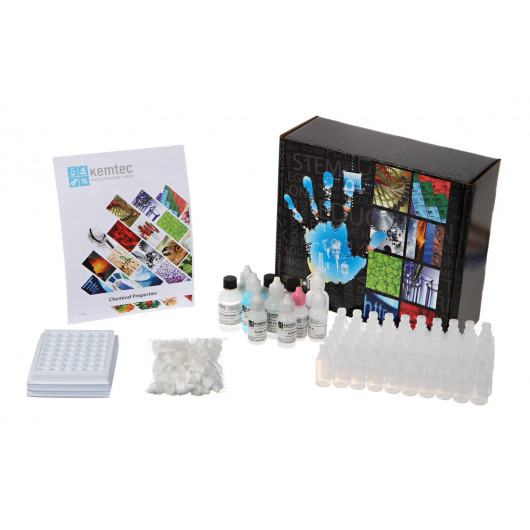Distance Learning: Introduction to Ionic Reactions SKU: ALD1518
Students will test a series of microscale chemical combinations to learn how to identify if a chemical reaction has occurred. Aligned to the Next Generation Science Standards (NGSS)*


Students test the chemical properties of seven different solutions in every combination and identify chemical properties by observing the reactions.
National Standards for Grade Levels 9-12
Evidence of chemical reactions observed include gas production, color changes, and formation of precipitates. After becoming familiar with the chemical properties of the solutions, students use the information to identify any of four unknown solutions. The kit includes all required chemicals, reaction plates, reproducible worksheets and student procedures. Designed for 24 students working in six groups of four.
Kit Contents
Shipping Weights and Dimensions
You are sent a comment success. The administrator will review and approve your comment. Thank you!
Students will test a series of microscale chemical combinations to learn how to identify if a chemical reaction has occurred. Aligned to the Next Generation Science Standards (NGSS)*
The activities in this kit focus on developing a better understanding of what is matter and what the different types of properties are
Introduce students to Chemical Equations as they perform and observe two different single replacement reactions and two different double replacement reactions.
In this activity, students will use the Innovating Science apparatuses and your temperature and pressure sensors to measure and plot the physical characteristics of a gas
Explore the basic types of chemical reactions, mole ratios, and the stoichiometric equivalents central to chemical calculations.
Students will be introduced to acids and bases and test a dilute acid and dilute base with neutral litmus paper to learn how pH strips indicate if something is acidic or basic.
In this activity, students will perform paper chromatography on three individual dyes, along with a mixture of dyes, to determine the composition of the mixture.
Includes ten experiments exploring the characteristics of matter: Properties of Matter, States of Matter, Physical Properties of Solids, Physical Properties of Liquids, Melting Point, Boiling...

Students test the chemical properties of seven different solutions in every combination and identify chemical properties by observing the reactions.